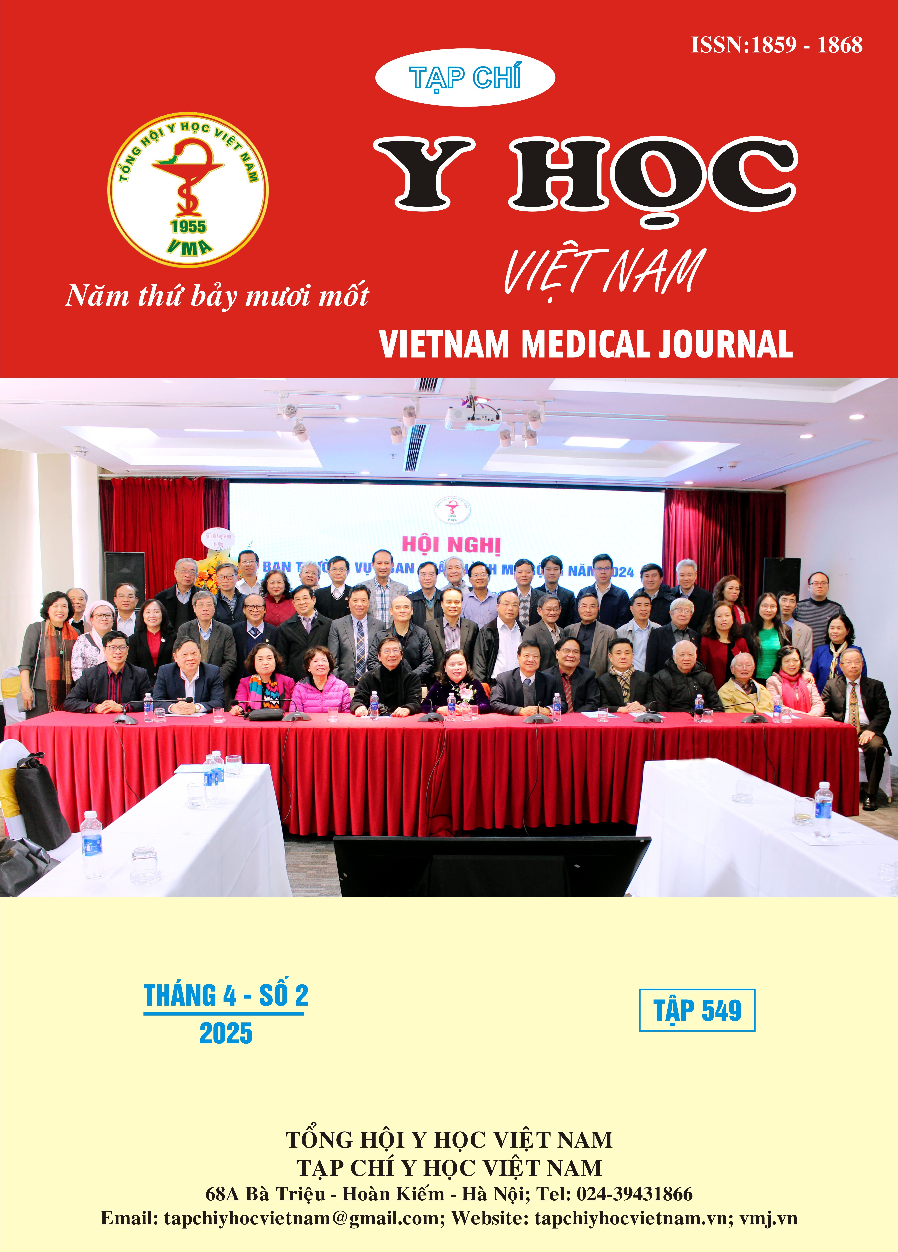ELECTRODIAGNOSTIC STUDIES IN TRAUMATIC RADIAL NERVE INJURY
Main Article Content
Abstract
Background: The radial nerve is a commonly injured nerve. The inability to extend the wrist results in a loss of hand function and dexterity that affects patients' ability to perform their activities of daily living. Finding a solution to traumatic radial nerve injuries is one of the great challenges faced by doctors. Electrodiagnostic studies are the best methods for localizing and assessing the severity of a radial nerve injury. Objective: To describe the epidemiology, lesions localization, the etiologies of traumatic radial nerve injury and evaluation the characteristics of traumatic radial nerve injury by Electrodiagnostic studies. Subjects and methods: A convenient sample of 128 patients with traumatic radial nerve injury at the hospital for Traumatology and Orthopaedics, Ho Chi Minh city from 1/4/2020 – 31/12/2020. Cross sectional study. Results: 128 patients with traumatic radial nerve injury, 79,7% male, 20,3% female. The mean age was 33 ± 11 years. Accidents at home with sharp objects is the most common cause of traumatic radial nerve injury. Reduction or loss of compound muscle action potential (CMAP) 85,9% and sensory neuronal activation potential (SNAP) 65,6%. Spontaneous activity electricity occupied 100%. Axonal injuries 100% and the level of incomplete injury was more common. Conclusion: Traumatic radial nerve injury is more common in male than female. Accidents at home with sharp objects is the most common cause. CMAP, SNAP always reduce or lost. Spontaneous activity electricity, axonal damages and level of incomplete damage was more commonly found.
Article Details
Keywords
Traumatic radial nerve injury, Electrodiagnostic studies
References
2. Kouyoumdjian JA. (2006). “Peripheral nerve injuries: A retrospective survey of 456 cases”, Muscle Nerve, 34:785-8.
3. R A Abrams 1, R J Ziets, R L Lieber, M J Botte, (1997), “Anatomy of the radial nerve motor branches in the forearm”, J Hand Surg Am, 22 (2): 232- 7
4. Neeraj Vij 1, Hayley Kiernan 1, Sam Miller-Gutierrez 2, Veena Agusala 3, Alan David Kaye 4, Farnad Imani 5, Behrooz Zaman 5, Giustino Varrassi 6, Omar Viswanath 1 4 7 8, Ivan Urits 4 9, (2021) “Etiology Diagnosis and Management of Radial Nerve Entrapment” 11(1):e112823.
5. Gerardo E. M, Ruben Y. Torres. (2016). “Epidemiology of Traumatic Peripheral Nerve Injuries Evaluated with Electrodiagnostic Studies in a Tertiary Care Hospital Clinic”, P R Health Sci J,Jun;35(2):76-80.
6. Palma C, Mauro M, Eugenia R, Bruno B, Arman S, Italo P, Giuliano F, Giuseppe M, Aristide M, “Traumatic peripheral nerve injuries: epidemiological findings, neuropathic pain and quality of life in 158 patients”, Journal of the Peripheral Nervous System 15:120–127 (2010).
7. Eser F, Aktekin LA, Bodur H, Atan C. (2009). “Etiological factors of traumatic peripheral nerve injuries”, Neurol India , 57:434−437.
8. Võ Đôn, Nguyễn Hữu Công (2018). Đặc điểm điện sinh lý trong chấn thương thần kinh ngoại biên. Y học TP. HồChí Minh,1 (Phụ bản tập 22),211-216


